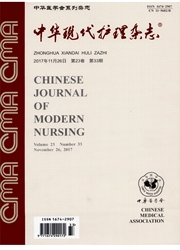

 中文摘要:
中文摘要:
目的探讨将PBL教学法与急诊工作特点相结合,应用于急诊专科护士抢救室实践培训中的效果。方法根据抢救室工作特点及要求,结合查阅文献、访谈急诊专科护士、研究小组讨论等,设计出急诊救护过程中涉及的关键问题量表,以此量表为调查工具,采用Delphi法对15名专家进行2轮咨询,最终形成急诊救护过程中的关键问题,即PBL教学法的12个核心问题。结果专家咨询的判断系数(ca)为0.84,熟悉程度(Cs)为0.94,权威系数(cr)为0.89,均〉0.7,说明本研究结果可信度较高,可应用于临床。研究小组通过先培训带教者及学员,后临床应用的方式,将此PBL式培训方法应用于实践。结论此培训方法的应用,使学员思路清晰、学习目的更明确,培养了临床师资,同时也促进了急诊专科护士临床实践考核由传统的理论、技论考核,扩展至情景模拟式考核。
 英文摘要:
英文摘要:
Objective To study the combination of PBL teaching methodology with the characteristics of emergency work, and its effect in professional nurses' practical training in the resuscitation room. Methods After reviewing related literature, interviewing professional nurses and group discussion, scale of key problems during rescuing was designed according to the characteristics and demand of emergency work and used as the investigative tool. Delphi was used to conduct the second round of consultation with 15 experts, and the final key problems were formed as the 12 core topics of PBL teaching. Results The analysis results showed that the judging coefficient (Ca) was 0.84, the familiarity (Cs) was 0.94, and the authoritative coefficient (Cr) was 0.89, all of which were above 0.7, and the method could be used for clinical purposes. PBL could be practiced after first training teachers and nurses and then clinical application. Conclusions PBL training can help trainees clear their mind, and understand the objectives in depth. And the method can not only culture clinical professionals, but also improve their levels of traditional theory and practice, and even expand to examination of scenario simulation.
 同期刊论文项目
同期刊论文项目
 同项目期刊论文
同项目期刊论文
 期刊信息
期刊信息
